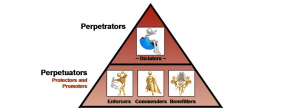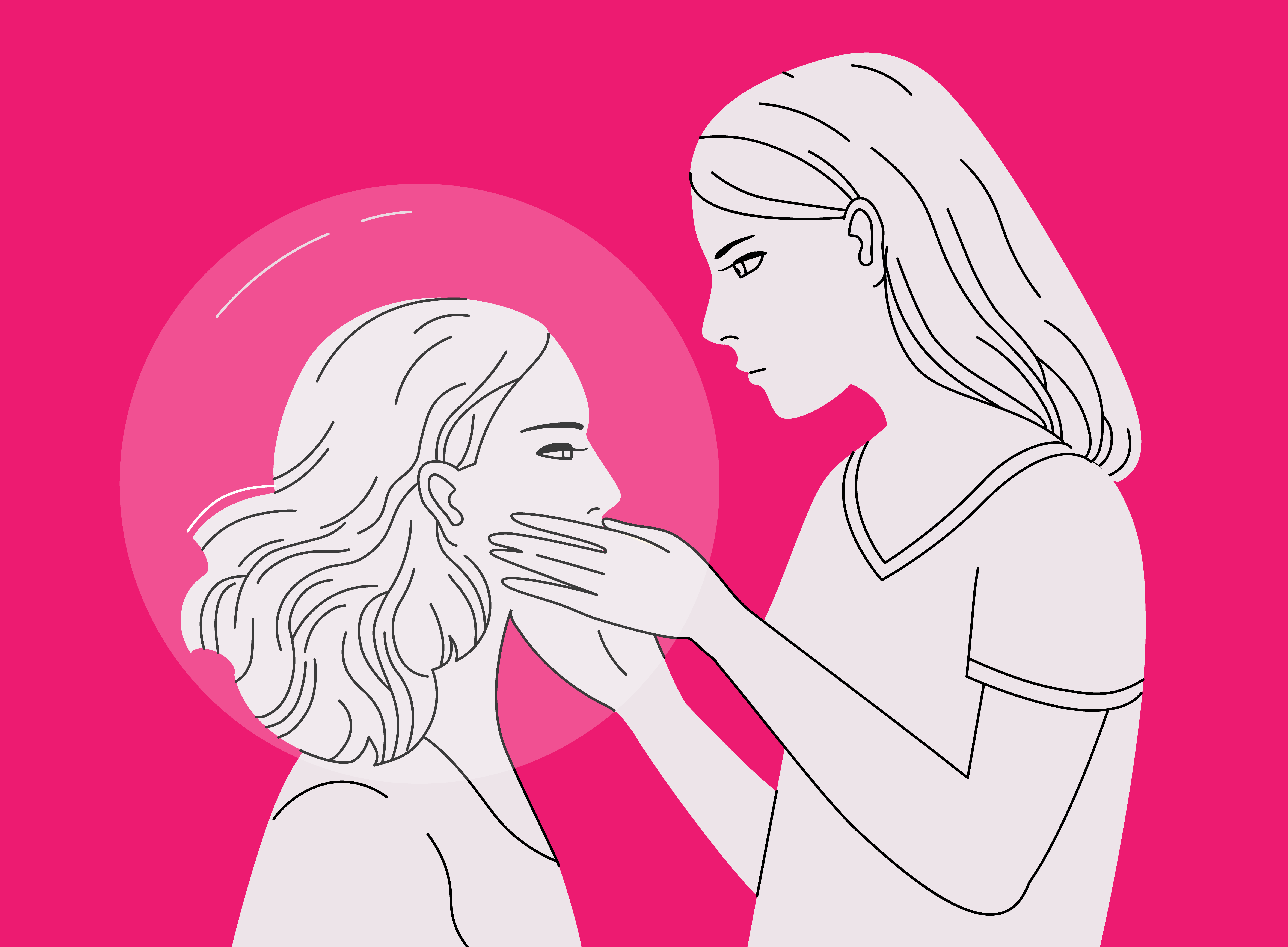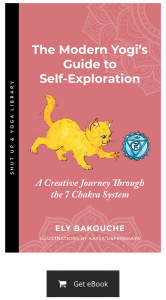This article is part two in a series on yoga cult culture. If you haven’t already, make you your read part one to understand what yoga-cult culture is and what it looks like in the real world.
Trigger warning: this article discusses the nature of various types of cult-like communities and may be triggering to anyone who has been victimized by these types of groups/individuals or anyone who has survived physical, emotional, mental, financial, or spiritual abuse.
One of the biggest issues with the toxic self-help communities discussed in part one is how they concentrate on the techniques rather than the people these techniques are meant to help. When the focus of self-help is on someone other than the self, how can it truly be about personal development? Each of us is on a unique journey, and to try to follow the path of another is to trivialize the individual blocks you face and dampen the exclusive strengths and experiences you bring to the table.
Organizations like Landmark, NXIVM, the Kabbalah Center, Nexus, Tony Robbins, and the like are masters at ignoring the individual and promoting a systemized and dogmatic approach to personal growth. But it’s not just the big ones. Small self-help conferences, individual coaches, and even your local yoga studio can fall into the pattern of prioritizing the needs of their business over the needs of their students.

How does someone get involved with a group/teacher like this?
If an organization or teacher is manipulative and abusive, how does an individual get involved with them in the first place? This surely wouldn’t happen to you or me, right? Well, I wouldn’t be so sure of that. It’s surprisingly easy to get pulled into these sorts of communities, and the individuals I spoke with in my research are some of the most discerning people I have ever met.
Psychologist and social worker Aisha Shabazz explains that it all comes down to safety, trust, and belonging. “You know, everybody wants to feel safe, everyone wants to trust, everyone wants to belong. And if we boil it down to that, there should be no reason why anyone would say ‘I can’t believe this would happen’ or ‘how did they not see.’ It’s very belittling to just say ‘I would never fall for that.’ There are plenty of communities you belong to that bill themselves on these three things; it’s just, they weren’t looking to take advantage of you.”
Note: Throughout this article, I’ll be sharing a few quotes Aisha Shabazz regarding the psychology of cults. In addition, I’ll feature quotes from Don Durrance, Yossef Sagi, and Lauren Brown. These are all individuals who agreed to share their own experiences with cult-like organizations and toxic “self-help” communities.
The Pyramid of Abuse
To understand how these groups take advantage of their members, we need to look at the Pyramid of Abuse. At the top, you’ll find the “Dictator” (harsh language, I know, but hang with me). This can be a jack-ass like L. Ron Hubbard (founder of Scientology) with the sole intention of making a buttload of money, or it can be teachers like Pattabhi Jois who seem good-hearted, but use their power to harm their followers. Regardless of who they are, the Dictator is the person in charge. Under them are the Perpetrators. These are the ones that keep the community under control and facilitate the growth of the Dictator’s mission. The Perpetrators fall into three categories:
Enforcers: Protect the Dictator from critics and shield them from doubt. These are often the assistants and volunteers who donate their time to help facilitate trainings and conferences for toxic “self-help” communities. For example, Yossef Sagi speaks of the teachers at the Kabbalah Center meetings he once participated in: “You always have these rationalizations in your head about why the leadership would have behaved a certain way; because they were always justified in their behavior through everything we learned from our teachers.”

When you try to share your concerns about your cult leader “spiritual guide.”
Commenders:
Promote and build trust in the Dictator using their own resources. I was once offered a fair sum of money to write a positive review for a company; if I had acquiesced, I would have been acting as a commender. These individuals are particularly dangerous because they make you believe that you can trust the organization, feel safe with the teachers, and belong with the community of members (read: this need for safety, trust, and belonging is what these types of groups prey on). For example, even when it came out that Bikram Choudhury was practicing abusive and dangerous behavior toward his students, tons of individuals came out to support him with rave reviews and endless praise. One New York Times article explains, “When I asked instructors about them, most defended him vigorously, saying that while Mr. Choudhury was certainly bizarre, he was not a predator. One told me that she found the allegations unbelievable because no shortage of female trainees threw themselves at him with devotion and lust”. These were the commenders.

Benefitters:
The inner circle of Enforcers and Commanders that benefit from their support of the Dictator. Whenever a cult organization or abusive leader is brought under fire, be it from a questioning member or a lawsuit, the first people to come to their defense are the members of the “inner circle.” We saw this with the senior teachers of Bikram yoga, the officials of Scientology, and the course leaders of Landmark. These are the higher-ups that are given wealth and prestige based on their support of the organization. As Yossef explains, “When you’re a figure in one of these organizations, people will look up to you not for your own merits, but for merits given to you by the organization… And that’s why a lot of people stay and are afraid to leave, especially a lot of people who are teachers there, because if they go out into the outside world and they don’t have their followers, then who are they?” The Benefitters’ desire to support the Dictator only grows as does their power in the organization.

The Enforcers and Commenders work hard (intentionally or not) to promote the Dictator and ensure no one doubts or questions them. In the case of toxic self-help communities, this can look like teachers and workshop facilitators who rave about how an organization changed their life or a group of yoga students who obsess over the specific teachings of a particular yogi at your local studio.
On the one hand, you have educated, discerning members of your community telling you not only to trust this organization/teacher but that their teachings can provide you with tangible growth opportunities that will change your life. It did, after all, change theirs. Then, on the other hand, you have smooth-talking friends who have joined these organizations, calming your worries and insisting that all you need to do is give it a try. If you don’t like it, you can always leave. It’s a free country! What are you afraid of?
If you’re a seeker like myself, always looking for new opportunities to grow and develop, it’s easy to be attracted to these sorts of groups and teachers. You see how others have thrived by working with them. And what’s the worst thing that could happen? It doesn’t work for you, and you leave. You might as well give it a try…
But why do people stay if the community is so unhealthy?
Say you go to a personal growth conference or a retreat led by one of these types of yoga teachers. At the end of it, you feel like you’ve learned a few things, but the organization or teacher is now asking you to commit a little more. It’s a bit out of your budget, and you’re starting to get the sense that this is a never-ending cycle, so you pass on the opportunity. Or, at least, you attempt to pass.
But then that intelligent, witty friend you met at the conference responds to your worries. “I get it,” she says, “it’s a big commitment. But what’s more important than investing in your own self-growth? Plus, you’ll get to join this awesome community of seekers who are so supportive and amazing. You are letting your attachment to money hold you back from reaching your full potential.”
After a bit of convincing, they help you see all the benefits of attending the next seminar in Mexico or going to the teacher training in Bali. It’s a small fee for a life-changing experience. And are you really going to let your fears hold you back yet again? So you go. Then you’re asked to buy into another course, another training, personal coaching sessions… it’s never-ending.

Lauren Brown explains her experience with Nexus. “They created a container for challenge that I did not have for myself. Part of my confusion was, ‘Is this just about me not wanting to deal with challenge and wanting to be more comfortable?’ But what was always mixed up with that was their financial agenda… There’s kind of a conflict of interest in some ways; this is about freeing your soul or becoming this higher level self where we all love each other, and it costs $1000 for the weekend.”
It seems if you ever want to progress or grow as an individual, you are always asked to hand over an inordinate amount of money and time to these organizations.
Only, by the time you realize this, the teachers of these personal growth seminars or yoga retreats have asked you to bare your soul. Lauren talks about how Nexus trainers asked members to share traumatic memories and perceived personal flaws during their weekend conferences. This creates a vulnerability that the leaders of the organization can capitalize, so when you tell your instructor that you can’t dedicate the time to go to the next training, they know exactly which buttons to push.
Aisha perfectly explains how these organizations use your vulnerability to their advantage:
People who don’t have a sense of community and need to feel safe recognize, “Oh wow, that person trusts me and told me a very intimate detail about themselves, so I am therefore going to share a really intimate detail about myself.” So, almost like a bait and switch opportunity. And once these groups find out these really intimate details about your lives, then, they just wait for the manipulation factor to come in. So if there is something that stands out to you, like, “Oh, you want me to give you how much money for a course?” or, “Oh, you want me to travel how far away from my nearest family or friend?” Then they try to say, “Oh, well, you know how your mother was really toxic to you and how she abandoned you? Well, if you don’t go on this trip with me or you don’t invest in this, then you’re like your mother.”
They use this technique all the time. You’re self-sabotaging like you always do. You’re afraid to commit to your own growth. You’re abusing your soul the way your father used to abuse your body; you get the picture. They know your fears and desires, and they prey on them. And these toxic communities do it all under the guise of “self-help.”
These organizations are masters of manipulation. Humans long for community, belonging, acceptance, and love. And these organizations are not afraid to use your own words against you, convincing you that these things you crave can only be found if you stick with them and insisting that any desire to leave is coming not from intuition or discernment, but from fear, energetic blocks, and self-sabotage.
The human brain is a lot more malleable than we like to admit, and for most of us, this manipulation works. We’re reminded of all the self-hate we contain, promised liberation from this self-hate, and led one step at a time deeper and deeper down the rabbit hole of their dogma.
What are the red flags? How can you identify a toxic community or teacher?
If they are such masters at manipulation, how are we ever supposed to identify when this is happening to us? How do we know if a teacher has our best interests at heart? How can we tell if that self-help conference is going to nourish and heal us or ensnare and abuse us?

If you are trying to figure out if your community or teacher is toxic, express your doubts to a friend or trusted confident and ask what they think of the situation (someone not in the group you are questioning). One suggestion Aisha shared for those who have been isolated from family and friends who are not part of the organization is to tell your concerns to a barista or waiter under the guise of, “You’re never going to believe this thing I heard about this group.” It protects your vulnerability while still giving you an opportunity to suss out the acceptability of your organization’s behaviors. In addition, or if you do not have someone you feel safe discussing this with, look out for these behaviors in your teacher or members of the community.
- Do they shame you? Say you tell your teacher you can’t make it to their next workshop. Do they ask if there is a way to make the program more accessible to you? Do they request feedback on how to improve their workshops? Or do they try to shame you into coming? Do they make you feel bad or unworthy because you are unable or unwilling to take the next step with them?
Shame is a key tool of a manipulator and is something these sorts of teachers and organizations lean on heavily.
- Do they shift the blame? A lot of these toxic organizations ask for a huge time commitment. Perhaps you tell your contact at the organization that you feel a bit overwhelmed by this and cannot attend the meetings as regularly as you would like. Do they own up to, or at least express a willingness to discuss, their unrealistic expectations? Or do they blame you for a lack of commitment? If every concern is your fault and never theirs, chances are you are part of an organization or working with a teacher that cares a lot more about your time and money than your personal growth.
- Do they focus on your weaknesses? Someone who really cares about your evolution will build you up. They will help you shine a light on the parts of you that you love and cherish and long to celebrate. If your community is constantly focusing on the skeletons in your closet, and especially if they are using these skeletons to rationalize why you should be committed to their program or offering, it’s time to GTFO. Find someone who sees your radiance, not someone who keeps rubbing salt in your wounds.
- Do they isolate you? Isolation makes abuse easier. If you don’t have family or friends pointing out the red flags, it can be harder to see them. As Aisha explains, “Isolation is a big one… What you’re looking for is whether a majority of time, energy, and effort are spent with this new community at the detriment of other things. Am I spending all of my money toward this new community? Am I not sleeping? Am I not communicating with my friends and family? The community is trying to siphon you off from the norm, so people don’t have an opportunity to miss you.”
- Do they change the subject? This is probably the most common and seemingly most innocent of the behaviors of manipulative communities. It’s such a natural human reaction to avoid confrontation, and we often assume it’s passivity that causes this in our teachers or organization leaders. But if every response to concern is a change of subject, it’s not just avoiding confrontation; it’s pretending there’s no issue in the first place. If you cannot get your teacher or organization leader to talk to you about their concerns, then how can you trust they are going to prioritize (or even hear) these concerns?
- Do they rationalize? If you call out a toxic community on their bullshit, they are going to try to defend themselves. They are going to have a million and one reasons why their manipulative behavior is not only acceptable but necessary for your self-growth. If every concern of yours is met with a rationalization for why it’s nothing to worry about, then it’s time to move on.
- Do they gaslight you? Also referred to as “breaking the ego,” gaslighting is when an individual tries to turn your doubts into proof of your insanity. Don Durrance experienced this with members of Scientology as well as teachers in his old Buddhist community. “It’s like slowly being boiled,” he explains, “as things get weirder and weirder, you start to question your own reality.” If your teacher or members of the community keep insisting that your concerns are ridiculous and roll their eyes at your doubts, that’s gaslighting.
Most of all, trust your gut. Only you can know what’s best for you. If something feels wrong or a part of you doesn’t feel safe, listen to your inner voice and take care of yourself.
What do you do if you think you are in a manipulative or toxic community?
Say you do end up in a group or working with a teacher who is choosing a manipulative and toxic approach to self-help. And you realize this and decide it’s not a healthy community for you to participate in. How do you extract yourself? And where do you go from there?

Psychology Today has a great article about how to spot and stop manipulators, and I highly recommend giving it a read as it will provide you with some great tools if you do end up in this situation.
When it comes to leaving toxic self-help communities your safety has to come first. Aisha explains how one might slowly and safely extract themselves from the grip of a cult-like organization:
If you feel like it’s safe or you’re ready to test the waters and spend less time with that group… pick something that’s going to fly under the radar [and] won’t necessarily be causing a major riff and essentially putting big neon lights around you saying, “I’m getting out of dodge.” If you pull away and wean yourself off as opposed to ghosting the group, that is a safe technique.
If you feel you cannot safely wean yourself off, the best thing to do is to find someone you can trust and rely on them for help. The following step-by-step process is something Don Durrance gave me; it is a technique his therapist taught him (combined with some of his own research and experience) that can be used to help extract yourself from unhealthy relationships, be it with a huge organization or a single teacher. That being said, if you have been isolated to the point where you cannot identify a safe friend or family member to help you, Aisha recommends going to the hospital. “Hospitals are a great place for sanctuary for people not feeling safe.” However, if you feel you can identify some safe people outside the organization, try the following:
Step 1: Trust your gut.
Our intuition is incredible. Just the other day, I had a bad feeling that something was wrong with my dog and immediately got a phone call from the neighbor saying he had escaped and was at their house. Our gut knows more than our society likes to admit, and if you are consistently getting an icky feeling about a group, situation, or individual, it likely means that you should not trust them. Nothing is more important than your own safety (physical, mental, emotional, and spiritual), so if you have even the slightest intuition that something might not be right, listen to it and proceed with steps 2-5.
Step 2: Find someone you trust and share your concerns.
The next step is to seek out a confidante. This ties into trusting your gut; don’t go to the person you are doubting. Find a friend or family member that you trust with every fiber of your being and reach out to them. Share with them a bit about your situation (as much or as little as you want) and watch how they respond. Do they reject your concerns? Then move on. Find someone else. Do they respond positively and offer to help you find safety? Carry on.
Step 3: Build a list of safe people you trust.
Some of us will only need one person to act as our anchor. One person to give us the safety and support we need to get out. But many of us will need an army of supporters. Try to build a list of as many safe people as you can find. I mean a literal, physical list with names, addresses, contact numbers, and everything you need to find that person when you need support. The larger the list, the easier it will be for you to execute steps 4-6.
Step 4: Identify safety.
At this point, you know you are not safe. So what would make you safe? Take this moment to identify what you need to feel so from the situation you are in. Once you have identified what those things are, find where you can find them (is there another house you can stay at? A community that will support your spiritual needs? A therapist that will help you with the trauma?) and how you can get to that safety.
Step 5: Seek safety.
Once you’ve identified your plan of action, call upon your support system to help you execute it. And keep that list you made close at hand, so if it ever becomes especially difficult to leave, you have a full list of names and numbers you can call to help you stay on track.
Step 6: Seek qualified support.
During step 4, you may or may not have thought about your emotional safety. If your physical, financial, or mental safety was at risk, this likely was at the forefront of your mind. But now that you’ve created some space between you and the toxic community you were a part of, you might be experiencing some emotional trauma. To expect yourself to be able to process and make sense of all you have experienced is to be unfair to yourself. You deserve professional support to help you move through, reflect upon, and process your experience. If it is something you are comfortable with and ready for, which by no means has to be the case, then I highly recommend seeking professional support from a qualified therapist.
Whether you’ve left an unhealthy community or want to avoid getting into one in the first place, my number one piece of advice would be to seek communities that encourage discernment and discussion. My favorite teachers are the ones that never tell me what I should do. They teach me a variety of practices and explain the effects of each, but what to practice (as well as how, when, and why), they leave to me. It is, after all, meant to be my practice. A teacher or community that really cares about your self-development will be eager to support you on your journey, even if it means rejecting practices that worked for them or engaging in practices that come from another source.

Only you can decide what makes sense for you. Only you know if a practice or teaching resonates with your soul. A true teacher will celebrate that.
Deconstruct the Techniques of Cult-Like Organizations on The Beginner’s Mind podcast!
This series is co-produced with The Beginner’s Mind Podcast. Every other week, I post an article here on Shut Up & Yoga. The week after each article is posted, I air an interview with an expert in the field on my podcast, The Beginner’s Mind.
For this topic, I interviewed a whole cast of characters who have hands-on experience with cult-like organizations and manipulative teachers. In addition, I spoke to Aisha Shabazz, a mental health professional who has dedicated her career to understanding manipulative organizations and how they prey on the human psyche. Throughout the podcast, we learn more about how these groups work and how to identify and extract yourself (or those you care about) from similar situations.
Edited by Ely Bakouche





